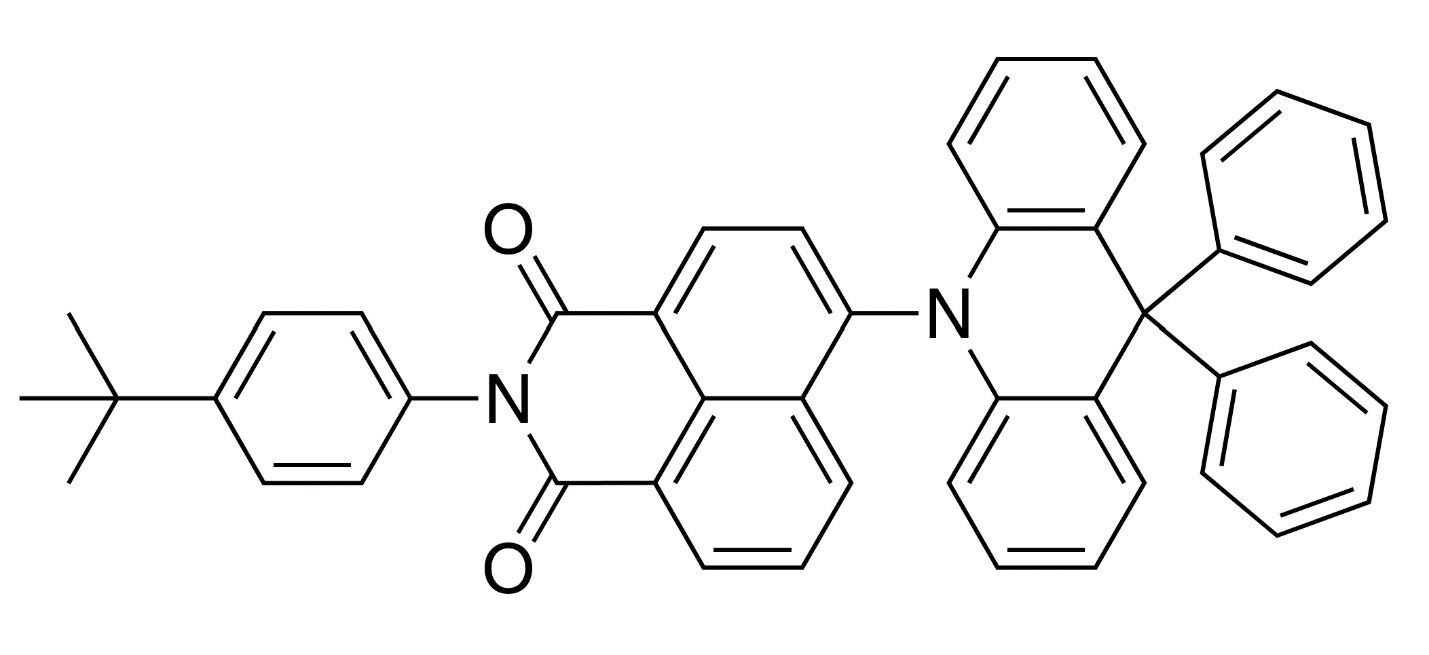NAI-DPAC
Product Description
NAI-DPAC, chemically defined as 2-(4-(tert-butyl)phenyl)-6-(9,9-diphenylacridin-10(9H)-yl)-1H-benzo[de]isoquinoline-1,3(2H)-dione, represents a sophisticated organic compound characterized by its unique molecular structure. It combines elements of acridine and benzoisoquinoline, creating a compound with distinct electronic and optical properties. These properties make NAI-DPAC particularly interesting for applications in organic electronics, where efficient charge transport and stability are critical. Its structure facilitates electron mobility, making it suitable for integration into devices such as OLEDs (Organic Light Emitting Diodes) and solar cells. Additionally, NAI-DPAC exhibits good thermal stability and solubility, further enhancing its potential utility across various technological fields.
Application
NAI-DPAC is primarily utilized in the development of advanced organic electronic components, specifically in technologies like OLEDs and photovoltaic cells. Its molecular structure promotes efficient charge transport, which is essential for enhancing device performance and operational lifespan. Moreover, the thermal stability of NAI-DPAC makes it suitable for applications requiring high operational temperatures without degradation. Its solubility allows for easy integration into various material systems, making it a versatile choice for electronic device manufacturing.
Articles:
- Achieving Nearly 30% External Quantum Efficiency for Orange–Red Organic Light Emitting Diodes by Employing Thermally Activated Delayed Fluorescence Emitters Composed of 1,8-Naphthalimide-Acridine Hybrids
Publication Date: 08 December 2017
Weixuan Zeng, Hsin-Yu Lai, Wei-Kai Lee, Min Jiao, Yi-Jiun Shiu, Cheng Zhong, Shaolong Gong, Tao Zhou, Guohua Xie, Monima Sarma, Ken-Tsung Wong, Chung-Chih Wu, Chuluo Yang
https://doi.org/10.1002/adma.201704961
- Cell-Penetrating Peptides Transport Noncovalently Linked Thermally Activated Delayed Fluorescence Nanoparticles for Time-Resolved Luminescence Imaging
Publication Date: December 10, 2018
Zece Zhu, Di Tian, Pengli Gao, Ke Wang, Yuce Li, Xuewen Shu, Jintao Zhu, Qiang Zhao
https://doi.org/10.1021/jacs.8b08438
- Structural Design of Blue-to-Red Thermally-Activated Delayed Fluorescence Molecules by Adjusting the Strength between Donor and Acceptor
Publication Date: 02 June 2020
Dr. Weilong Che, Dr. Yujun Xie, Prof. Zhen Li
